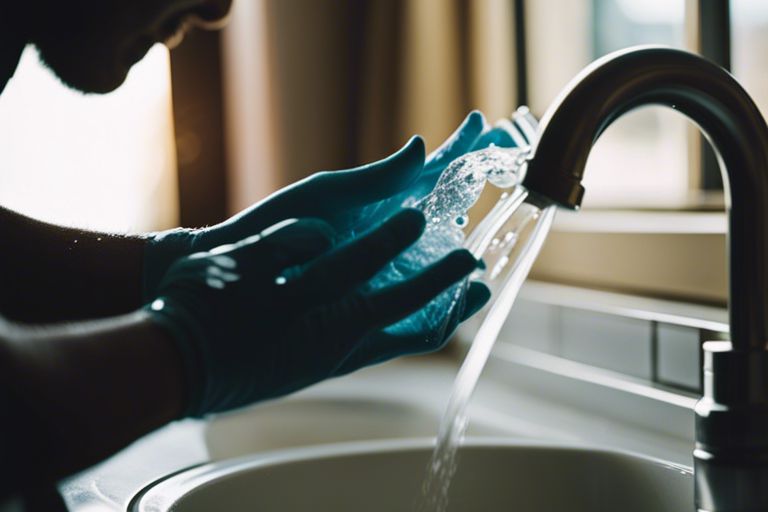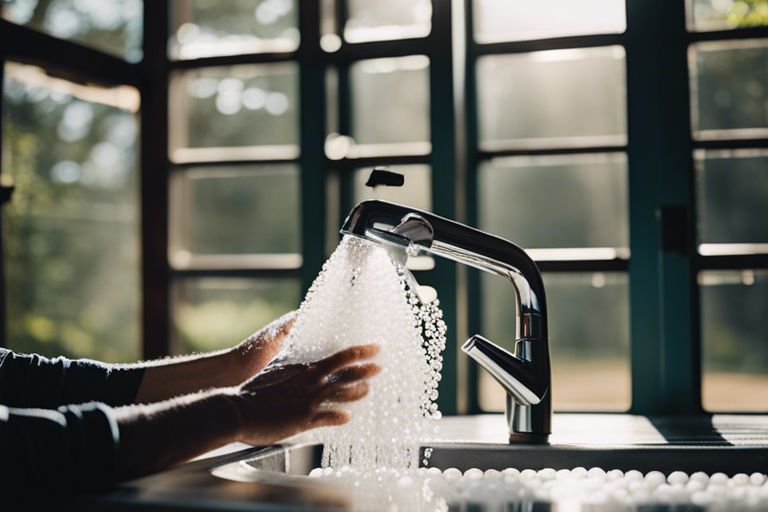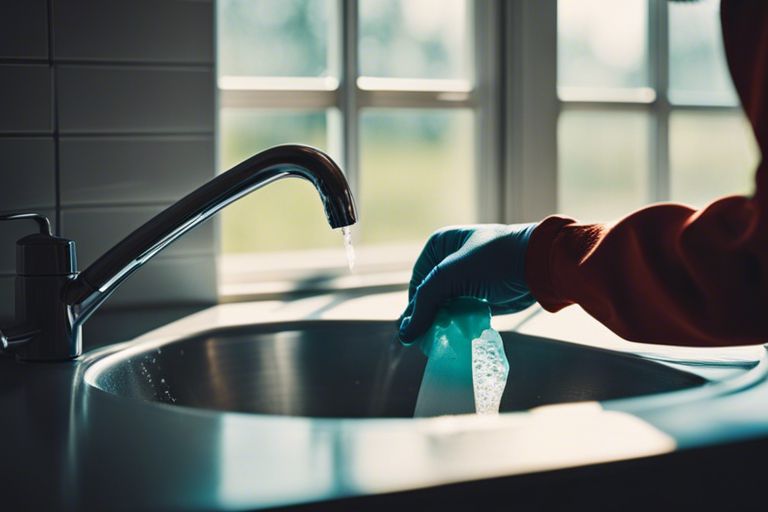This guide will provide you with vital tips and techniques on how to properly clean and maintain your cycling bibs. Washing your cycling bibs correctly is crucial for keeping them in top condition and ensuring maximum comfort during your rides. By following these instructions, you can prolong the life of your cycling bibs and keep them looking and feeling great for many rides to come.
Key Takeaways:
- Use a mild detergent: It is important to use a gentle detergent when washing cycling bibs to avoid damaging the fabric and padding.
- Avoid fabric softeners: Fabric softeners can leave a residue on the bibs which can impact their moisture-wicking properties and breathability.
- Air dry: To prolong the life of your cycling bibs, it is best to air dry them instead of using a dryer, as high heat can degrade the fabric and elastic.
Understanding Your Cycling Bibs
Materials and Fabrics Used
Your cycling bibs are typically made from a blend of synthetic materials such as Lycra, spandex, and polyester. These materials are chosen for their stretch, durability, and moisture-wicking properties, which help keep you cool and comfortable during your rides.
The Importance of Proper Care
Clearly, proper care is crucial to maintain the performance and longevity of your cycling bibs. Washing them with harsh detergents or fabric softeners can break down the fibers and diminish their moisture-wicking abilities. It is crucial to follow the manufacturer’s care instructions, typically found on the tag inside the bibs, to ensure they stay in top condition.
Cycling bibs are a crucial part of your cycling kit, providing comfort and support during long rides. By understanding the materials used and the importance of proper care, you can ensure that your bibs maintain their performance and durability for many rides to come.
Pre-Wash Tips
There’s no denying that cycling bibs take a beating during rides, accumulating sweat, dirt, and grime. Before tossing them into the washing machine, it’s important to follow a few pre-wash tips to ensure their longevity and cleanliness.
Preparing Your Bibs for Washing
The first step in washing your cycling bibs is to turn them inside out. This helps to prevent the chamois pad from retaining soap residue and ensures a thorough clean. Additionally, be sure to zip up all zippers and fasten any Velcro straps to prevent snagging other clothing items in the wash.
Spot Cleaning Techniques
When faced with stubborn stains or particularly dirty areas on your bibs, spot cleaning is the way to go. Use a gentle stain remover or a mixture of mild detergent and water to target these areas before tossing them into the wash. For instance, a soft-bristled brush can help lift dirt and grime from the fabric without causing damage.
- Turn bibs inside out before washing.
- Zip up zippers and fasten Velcro straps.
- Spot clean stubborn stains before washing.
Assume that a little extra care during the pre-wash stage can go a long way in maintaining the quality and performance of your cycling bibs.
The Washing Process
Despite the high-performance material used in cycling bibs, they still need regular washing to maintain their quality and longevity. Proper washing not only removes dirt and bacteria but also helps to preserve the fabric’s elasticity and structure.
Hand Washing vs. Machine Washing
With advances in technology, machine washing is the preferred method for washing cycling bibs. It ensures a thorough clean and helps to maintain the quality of the fabric. However, if you prefer hand washing, make sure to use lukewarm water and a gentle detergent specifically designed for technical fabrics.
Appropriate Detergents and Settings
Machine washing your cycling bibs with a gentle detergent made for delicate fabrics is crucial to avoid damaging the material. Additionally, choose a cold water setting and avoid using fabric softeners or bleach, as these can degrade the elasticity of the fabric and its moisture-wicking properties.
Washing your cycling bibs inside out can help protect the outer layer and preserve any logos or designs on the fabric. Air drying is recommended to prevent shrinking and maintain the shape of the bibs.

Drying and Post-Wash Care
Effective Drying Practices
After washing your cycling bibs, it is crucial to dry them effectively to maintain their quality and prolong their lifespan. With modern moisture-wicking fabrics, it is best to air dry your bibs by laying them flat on a clean surface or hanging them up. Avoid using a dryer, as high heat can damage the fabric and elastic materials.
Storing Your Cycling Bibs Properly
Drying practices are important, but how you store your cycling bibs also plays a crucial role in their longevity. After your bibs are completely dry, fold them neatly and store them in a cool, dry place away from direct sunlight. Avoid leaving them crumpled or bunched up, as this can lead to creases and deformities in the fabric over time.

Factors Affecting the Life of Your Bibs
Frequency of Use and Wash
You must consider the frequency at which you wear and wash your cycling bib shorts to ensure their longevity. Overuse without proper washing can lead to a faster deterioration of the fabric and chamois. Make sure you follow the manufacturer’s guidelines on washing and drying your bibs to maintain their quality and integrity. Any negligence in this regard can significantly impact the lifespan of your bib shorts.
Environmental Factors and Usage
Environmental factors and how you use your bibs play a crucial role in determining their durability. Factors such as excessive exposure to sunlight, harsh weather conditions, and abrasive surfaces can wear out the fabric and padding over time. Additionally, the intensity and duration of your rides can also affect the wear and tear on your bib shorts. After each ride, inspect your bibs for any signs of damage or wear, and take necessary steps to address them to prolong their life.
- Avoid prolonged exposure to sunlight and harsh weather conditions.
- Avoid riding on abrasive surfaces that can damage the fabric.
- Inspect your bibs after each ride for any signs of wear and tear.
- Properly store your bibs in a cool, dry place when not in use.
- After each ride, wash your bib shorts according to the manufacturer’s instructions.

Advanced Tips for Bib Longevity
- Using Fabric Conditioners and Protectors
Now, beyond just washing your cycling bibs properly, using fabric conditioners and protectors can further extend their lifespan. Fabric conditioners help keep the fabric soft and maintain elasticity, while protectors create a barrier against elements that can cause damage.
- Repairing Minor Damages
Clearly, even with proper care, cycling bibs can sometimes incur minor damages like loose threads or small tears. It’s crucial to address these issues promptly to prevent further degradation of the garment’s integrity.
This proactive approach can involve using a needle and thread to mend small tears or reinforcing stitching on loose seams. Additionally, applying fabric glue can be effective for securing loose hems or edges. By tackling these minor damages early on, you can prolong the life of your cycling bibs and ensure they remain in top condition for longer.
Final Words
Considering all points discussed above, it is clear that washing your cycling bibs properly is crucial to maintain their quality, comfort, and longevity. By following the recommended steps of turning the bibs inside out, using a gentle detergent, washing in cold water, and air-drying, you can ensure that your cycling bibs remain in top condition for many rides to come. Bear in mind, taking care of your cycling gear is just as important as taking care of your bike. So, don’t neglect this crucial step in your cycling routine.
FAQ
Q: Why is it important to wash cycling bibs regularly?
A: Washing cycling bibs regularly is important to remove sweat, oils, and dirt that can accumulate during rides. This helps prevent bacteria growth, odors, and skin irritations, and also prolongs the lifespan of the bibs.
Q: How often should I wash my cycling bibs?
A: It is recommended to wash your cycling bibs after every ride, especially if you sweat a lot or ride in hot weather. If you cannot wash them immediately, hang them to air out and wash them as soon as possible to prevent bacteria buildup.
Q: What is the best way to wash cycling bibs?
A: To wash cycling bibs, turn them inside out and place them in a mesh laundry bag to protect them from snagging. Use a gentle detergent, wash them on a delicate cycle in cold water, and avoid using fabric softeners. Hang them to air dry instead of using a dryer to prevent damage to the fabric and chamois.




